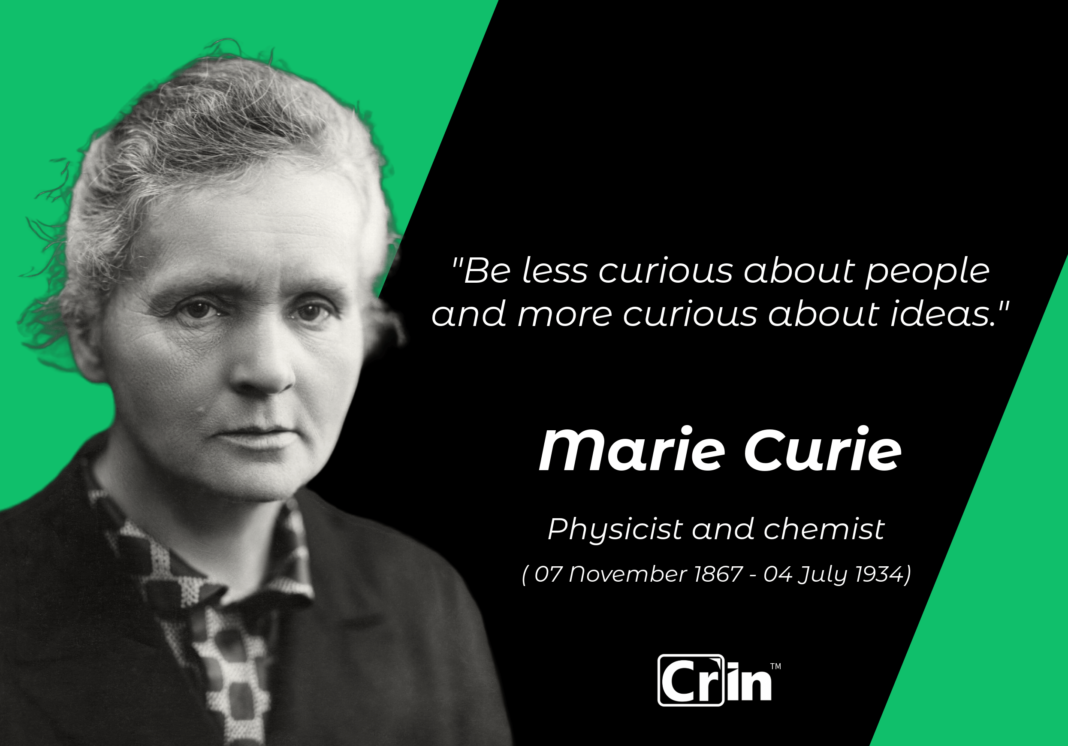Brief Description :-
Marie Curie, a name synonymous with scientific breakthroughs, was a Polish and naturalized-French physicist and chemist who changed the landscape of science with her groundbreaking research on radioactivity.
Born Maria Skłodowska in Warsaw, Poland in 1867, Curie’s passion for science was evident from a young age. Despite facing financial difficulties and limited opportunities for women in science at the time, she persevered and moved to Paris to pursue higher education at the prestigious Sorbonne University.
It was there that Curie met Pierre Curie, a fellow scientist who would become her husband and research partner. Together, they embarked on a remarkable journey of discovery. In 1898, their meticulous research led them to isolate two new elements: polonium, named after Curie’s native Poland, and radium. The discovery of radium, a highly radioactive element, opened a new chapter in scientific understanding of matter and energy.
Their work on radioactivity didn’t stop there. Curie coined the term “radioactivity” and continued to delve deeper into its properties. This dedication earned them the 1903 Nobel Prize in Physics, a first for a woman and a shared honor with physicist Henri Becquerel.
Tragedy struck in 1906 when Pierre Curie died in a street accident. Marie, however, did not falter. With immense determination, she continued their research and became the first person to win a Nobel Prize twice. In 1911, she was awarded the Nobel Prize in Chemistry for her discovery of polonium and radium, and for her isolation of pure radium.
Curie’s scientific achievements extended beyond the lab. During World War I, she recognized the potential of X-rays, a technology using electromagnetic radiation similar to radioactivity. She developed mobile X-ray units, bringing this lifesaving technology directly to field hospitals, and helping countless soldiers wounded on the battlefield.
Marie Curie’s legacy is far-reaching. She paved the way for women in science, shattering barriers and proving their equal footing in the field. Her pioneering research on radioactivity laid the foundation for developments in cancer treatment, medical imaging, and our understanding of the universe.
Despite her achievements, Curie’s constant exposure to radiation ultimately took a toll on her health. She died in 1934 from aplastic anemia, a condition likely caused by radiation exposure. Marie Curie’s life story is a testament to unwavering dedication, scientific brilliance, and the enduring impact a single mind can have on the world.
For detailed information kindly visit Marie Curie on Wikipedia



